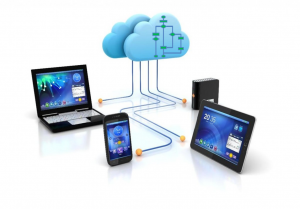“The IoT will connect 1.1 billion devices in smart cities this year and a whopping 9.7 billion devices by 2020, while smart homes will lead with 294 million connected devices in 2015,” said a report on ‘Smart cities will include 10 billion things by 2020.’
IoT is a network of objects or things embedded with electronics, software, sensors and connectivity to enable it achieve greater value and services by exchanging data with manufacturer, operator and other connected devices.Identifiable through embedded computing system, each thing (device) can interoperate within the internet infrastructure.
IoT has the ability to transfer data over network without human or computer interaction or interface.Smart homes and smart buildings, representing 45% of connected things in use this year, are projected to touch 81% by 2020, with increasing investments and service opportunities.”Smart cities represent a great revenue opportunity for technology and services providers (TSPs) who have to plan, engage and position their offerings in advance,” the report said, quoting Gartner research vice-president Bettina Tratz-Ryan.
Describing a smart city as an urban area where multiple sectors cooperate to achieve sustainable outcomes, Gartner said IoT would facilitate sharing real-time information specifically.As majority of IoT spending for smart cities will come from the private sector, TSPs will benefit with shorter procurement cycles than the public sector.
As denizens invest more in smart-home solutions, the number of connected things in smart homes will cross one billion units in 2017.Connected things include smart LED lighting, healthcare monitoring, smart locks and sensors for motion detection or carbon monoxide.
Smart LED lighting will record the highest growth of IoT consumer applications, with 570 million units expected to be sold by 2020 as against six million this year, as light will be a communication carrier than an illumination source.”Homes will become information and smart-enabled, with an integrated services environment to provide value and create individual-driven ambience. They will become personal space that provides assistance or concierge experiences to an individual,” Tratz-Ryan asserted.Use of IoT in transport will reduce traffic congestion. The US and Britain are implementing radio receivers and sensors that are embedded on a highway to diagnose traffic conditions in real time.Besides investing for residential use, IoT can be deployed for on-street and off-street parking guidance, road traffic guidance and traffic flow metering.Electric mobility, charging stations and embedded IoT will generate additional opportunities in smart cities.For instance, IoT in vehicles or in their batteries, sensing and communicating with a driver or next charging station to negotiate charging terms.Automobile firms are investing in street lights with charging stations embedded in the post to reduce the infrastructure investment for automobile charging stations.










